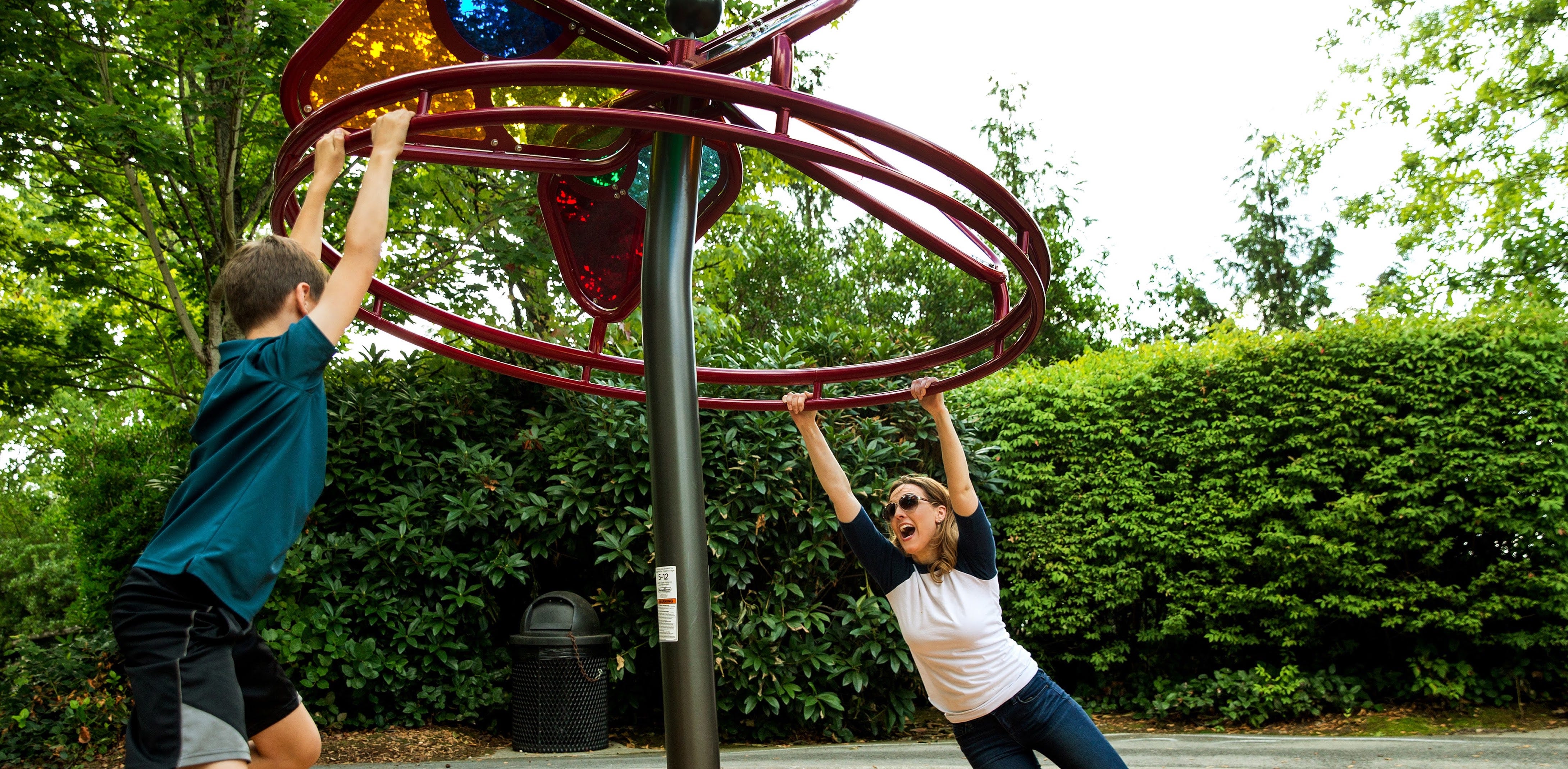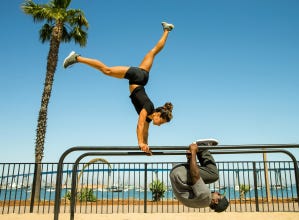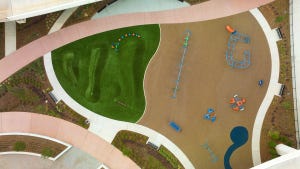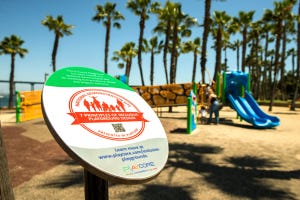Program Your Park
This is part three of our Playground Sustainability 101 Series. Check out parts one and two.
One of the questions we receive most is, "How can I make sure my playground is serving the whole community?" Our answer: add programming to your park. Programs and activity options that meet specific needs in the community are a great way to make sure the park is used year-round by everyone. A well-programmed park and playground is a space that everyone loves. Here are some ideas for combinging programs with your playground.
Promoting Physical Activity
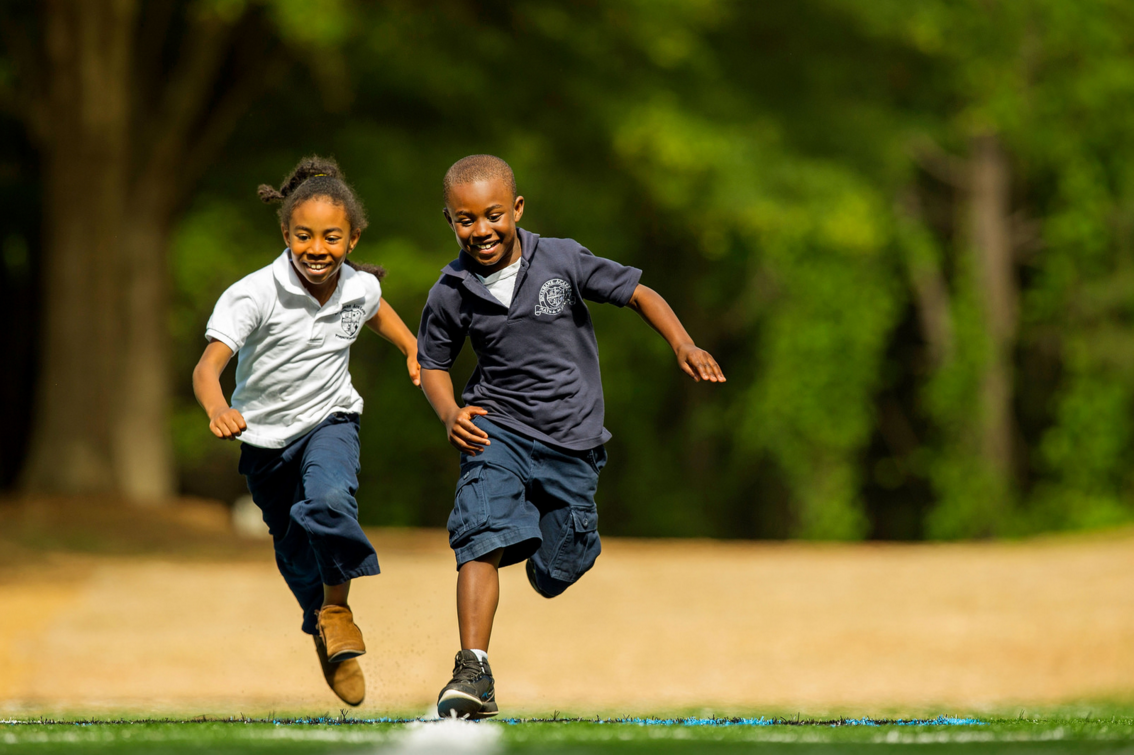
Kids of all ages need to run around and stretch their legs every day, it’s recommended that they get 60 minutes or more of moderate to vigorous physical activity daily. This daily exercise has been shown to increase academic achievement, as well as help develop the mind, body, and spirit. What better way to make sure your community’s kids are getting their exercise than by giving them a playground with lots of physical activities and programs. Some great things to incorporate into your active playground are a variety of swinging, sliding, spinning, climbing, and balancing equipment. Some other ideas to increase physical activity on your playground include:
- Creating an “activity of the week” such as a fun playground game
- Creating “stations” with playground equipment such as balls and hula hoops
- Pretending the play structure is a pirate ship or castle to encourage imaginative play
- Incorporating games such as Red Light-Green Light, Follow the Leader, or Hide and Seek
If you want to learn more about designing and programming your play space to promote physical activity, head to www.playcore.com/playon and check out “Play On!: Playground Activities for Youth Fitness.”
Engaging with Nature
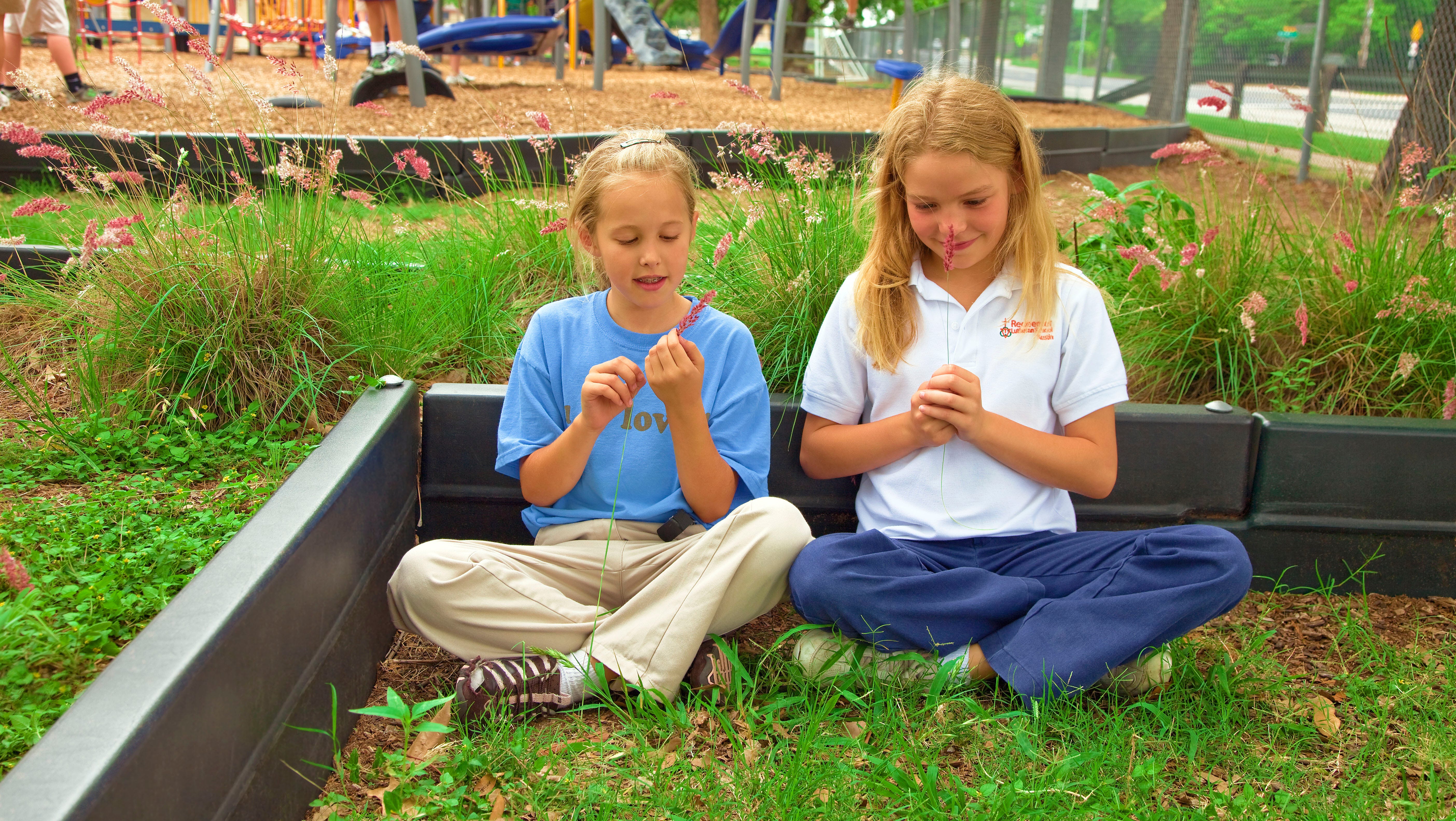
Kids need to be out in nature. Spending time at play in nature has been shown to improve a child's mental well-being! Your playground can serve as the place where kids reconnect with and learn about nature and have fun doing it. When you incorporate nature into and around your playground, you can teach kids all kinds of things about nature such as the different kinds of plants and trees, the stages of plant growth, and the importance of photosynthesis.
One way to include nature in your playground is by having a walking and biking path surrounding it that could help kids see more of the surrounding natural environment and get some physical activity. A walking and biking path is a great place for parents to play observational games with their kids that encourage them to observe their natural surroundings. Some of these observational games are “I Spy,” “Hide and Go Seek,” or an alphabet game where kids point out something around them that starts with every letter of the alphabet. Some other ways to include nature in your playground is to have sand/water activities, areas for gardening, and areas for wildlife observation.
To learn more about which plants in your area are child-friendly and the benefits of incorporating nature into your playground, visit www.naturegrounds.org.
Supporting Inclusive Play
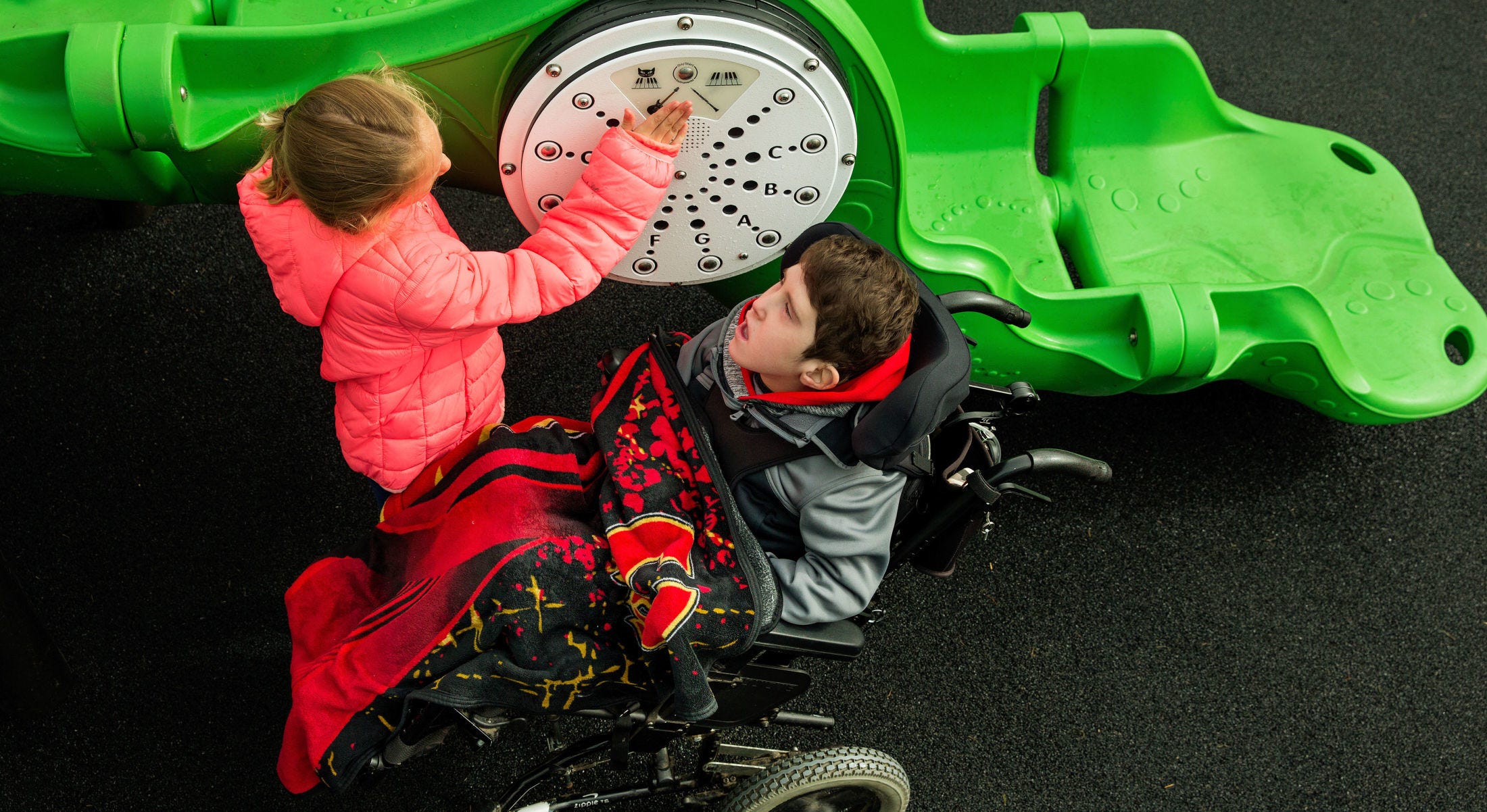
A playground should be a place where kids of all abilities can come together and have fun. The goal should be to create a space where the needs of all children are considered by providing opportunities for physical, mental, communicative, social/emotional, and sensory development. You may have already designed an inclusive playground but to go further your playground should be a place where the community has events and programs that raise awareness about disabilities and inclusiveness. Some examples of these events or programs are hosting up close and personal sessions with people with disabilities, storytelling or puppet shows, adapted sports demonstrations, or interactive disability simulations.
For more tips and activities about disability awareness and programming, request a copy of “2Play Together: Fostering Friendships Through Inclusive Play” by visiting www.inclusiveplaygrounds.org.
Bringing Learning Outdoors
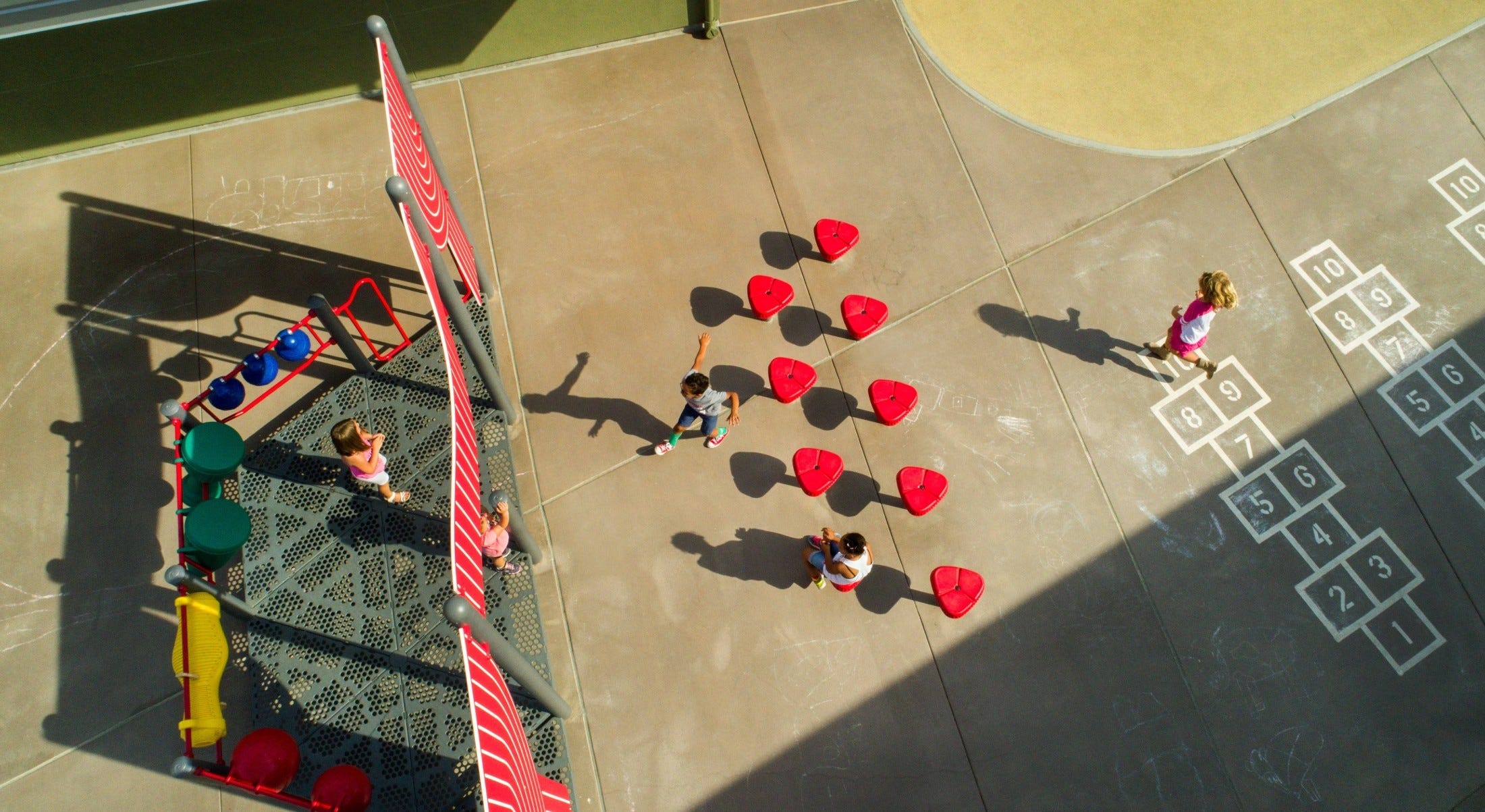
A well-designed playground can double as the ultimate outdoor classroom! When learning is combined with playing, kids can deepen their understanding of skills and concepts and improve their scores in school at the same time. Lots of common subjects in school can be taught in the outdoors such as math, music through the use of musical playground equipment, languages and vocabulary, and science concepts such as biology and physics. Some ideas for outdoor learning events and activities include:
- Water Day: kids can paint with water on sidewalks, play on water slides, run through sprinklers, and bob/scoop for items in buckets
- Camp Out: kids can pitch tents, participate in scavenger hunts, sing camp songs, tell stories, learn fire safety, and learn to use camping equipment
- Summer Athletics: have a mock Olympics where kids can join teams, have an opening ceremony, and participate in various activities like obstacle courses, field games, tack/bike races, and relay races
Bring creativity and imagination outdoors with the “Outdoor Creative Play and Learning System.” For more information on this and other curriculums, visit www.playcore.com/curriculum.
Community Events
.jpg)
Now that you’ve created your playground, it will be an ideal place for community activities and events! Whether it’s a birthday party, a reunion, or an end-of-school party, a well-designed playground and recreation area is the perfect venue!
Things to consider:
- Post a sign in the recreation area that has the phone number and website to reserve the space for events
- Decide if there will be a fee for reserving the gathering area, these fees can help pay for maintenance costs
- Have clear rules for the use of the space and make sure they’re easy to find and read online and on signs at the playground/recreation space
- Know what permits are required in your city and have a clear process for dealing with them
- Have a schedule for your space that includes days and times and make sure this information is easy to find online and on signs at the site
- Decide what equipment is okay to bring to the site, this could include things like bounce houses, stereo equipment, or food preparation equipment
- Decide if you will make the space available for special events such as fundraisers, concerts, exhibits, etc. These are great ways to raise money to cover maintenance costs for your space but they require special planning for things like food service and sales or ticket sales and admission
Providing Playworkers
A playworker is someone who assists, encourages, and enhances play to make sure all kids who visit a playground are safe and have fun. Playworkers can provide a safer play space in general and can intervene to avoid crisis situations. Over the years there have been fewer playworkers on public playgrounds, but there is a growing effort to bring them back into use. For example, New York City employs college students during the summer to staff their playgrounds and Oklahoma City has implemented a very successful playleader program. Another possibility used by some cities is to use retirees as volunteers on playgrounds. Whoever you decide to use as playworkers on your playground, it’s important that they’re trained in supervision, playground safety, maintenance, and play facilitation.
We’ve given you a lot of ideas about how to make sure your playground is a valued and successful part of your community. Remember to make sure your playground’s programs and activities encourage physical activity, get kids engaged with nature, are inclusive to everyone, and have playworkers on site to keep everyone safe and happy!
This post (and all of our posts from the Playground 101 series) is based on information found in Blueprint for Play, a comprehensive guide to Planning, Funding, Designing, Building and Sustaining a playground. Learn more and request your copy today.

